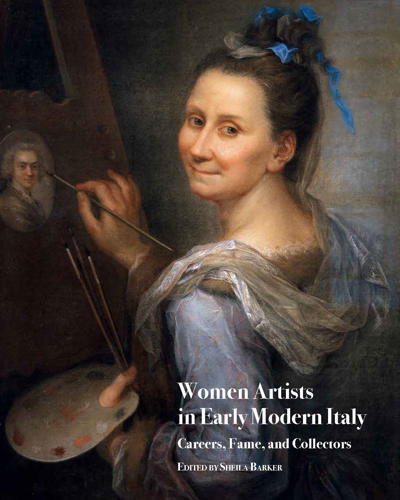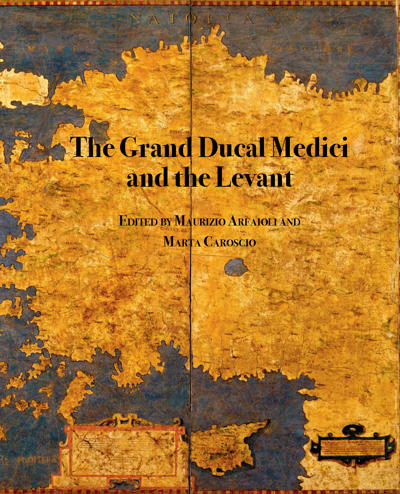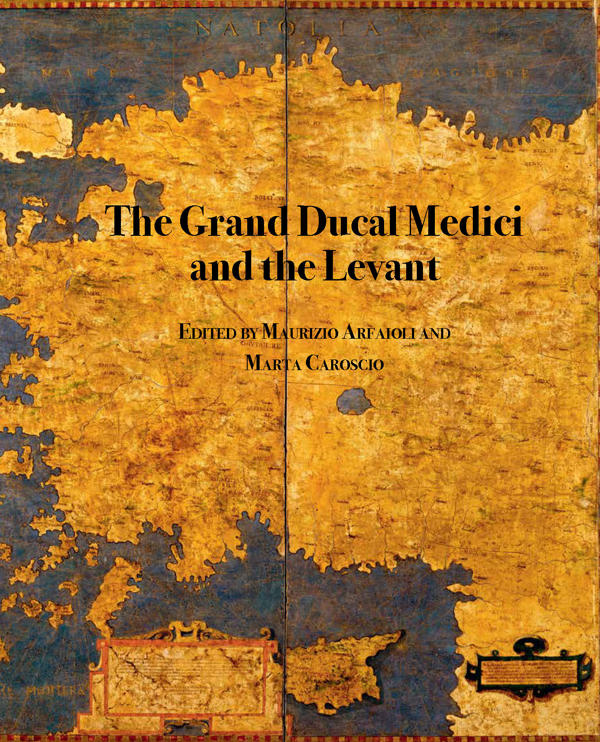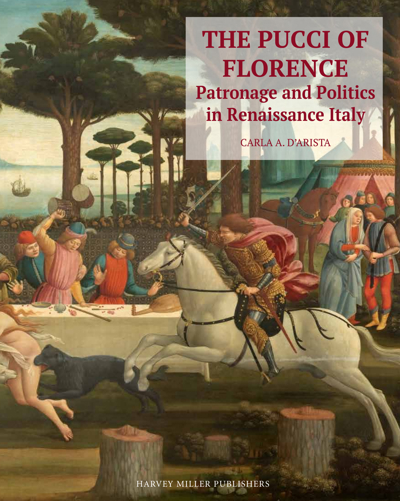
The Grand Ducal Medici and the Levant
Marta Caroscio, Maurizio Arfaioli (eds)
- Pages: 186 p.
- Size:220 x 280 mm
- Illustrations:42 b/w, 25 col.
- Language(s):English, Italian
- Publication Year:2016
- € 115,00 EXCL. VAT RETAIL PRICE
- ISBN: 978-1-909400-36-8
- Hardback
- Available
This volume addresses the major themes that marked the complex relations between the Medici Grand Dukes and the Levant.
“This unique collection does not merely document the political, diplomatic, economic, social, artistic and scientific culture of early modern Tuscany (…) The result is truly engrossing and a testament to the archival collection’s richness as well as potential for future research. (…) If a primary purpose of contemporary historical writing is to break new ground and investigate new perspectives on the past, then this is exactly what this important volume is doing by putting Medici-ruled Tuscany back on the map of East-West relations in the early modern age.” (Mathieu Grenet, in The Journal of Early Modern History, 23/4, 2019, p. 392-395)
Maurizio Arfaioli (PhD, University of Warwick, 2002) is Senior Research Fellow at the Medici Archive Project.
Marta Caroscio (PhD, Universita di Siena, 2008) is Senior Research Fellow with the Eugene Grant Research Program on Jewish History at the Medici Archive Project
For over two centuries (1532-1737), the Medici, as dukes of Florence and grand dukes of Tuscany, ruled over a western Mediterranean state whose geopolitical sphere of infl uence was centered in Europe. The transformation of the House of Medici from republican “primi inter pares” of Quattrocento Florence to dynastic rulers occurred at the same moment when the Ottoman Empire emerged as an early modern superpower, polarizing Mediterranean politics. The Italian Peninsula became the stage where the cultural forces of the eastern and western Mediterranean converged. As a result, from the early days of their rule, the Medici grand dukes became enmeshed in a power dynamic that encompassed war, religion, diplomacy as well as economic interests and cultural exchange. This collection of essays sheds new light on key aspects of the complex relations between the Medici grand dukes and the Levant.
Preface – A. Assonitis
Introduction – M. Arfaioli, M. Caroscio
Section 1. Diplomatic and Economic Connections
Veronica Prestini (Universita degli Studi di Napoli “Federico II”) –Economia e diplomazia nella politica ottomana di Cosimo I (1537-1574)
Ozden Mercan (European University Institute) –Medici-Ottoman Relations (1574-1578): What Went Wrong?
Gennaro Varriale (Universita degli Studi di Genova) –Avvisi del Levante a Firenze. L’informazione sul Turco alla corte di Cosimo I de’ Medici
Brian Sandberg (Northern Illinois University) –‘The Recovery of God’s Heritage’: Maria de’ Medici and French Religious Politics in the Eastern Mediterranean
Section 2. Conflicts in a Mediterranean Perspective
Niccolo Capponi (Archivista, Centro Studi Famiglia Capponi) –Sul ponte sventola bandiera rossocrociata: L’altra faccia della marina medicea nel Levante
Laura Cirri –Il Sacro Militare Ordine di Santo Stefano e i Turchi: lettura comparativa dell’apparato iconografico ed emblematico dei granduchi toscani
Sean Nelson (Kunsthistorisches Institut in Florenz) –Relics of Christian Victory: The Translation of Ottoman Spolia in Grand Ducal Tuscany
Section 3. Perceiving and Representing the ‘Other’
Ulrike Ilg (Kunsthinstorische Institute in Florenz) –Visiting the “Serraglio del Gran Signore”. Medici Diplomacy and Cross-Cultural Contacts at the Time of Francesco I
William Kynan-Wilson (Trinity College, Cambridge) –The Ottoman Imagery of Jacopo Ligozzi in Medici Florence
Maria Alberti (Accademia di Belle Arti, Venezia) –La scoperta del teatro. Spettacoli alla corte medicea (1614-1615) descritti da uno spettatore d’eccezione: l’emiro druso Fakhr ad-Din
Tessa Gurney (University of North Carolina at Chapel Hill) –Performing the Mediterranean in Giovan Battista Andreini’s Lo Schiavetto
Section 4. Material Culture: Imported Objects and Transmission of Knowledge
Francesco Morena (Independent Scholar) –Cosimo III de’ Medici e Pietro il Grande, una passione commune: l’Oriente.
Marta Caroscio (The Medici Archive Project) –Blue Daisies and Red Tulips. Chinese Porcelain, Iznik Ware and Early-Modern Taste at the Medici Court
Irene Sabatini –Tappeti orientali e spagnoli nel territorio fiorentino tra XVII e XVIII secolo. Gli esemplari della chiesa dell’Ambrogiana a Montelupo Fiorentino
Margherita Farina (Universita per Stranieri di Siena), Sara Fani (Universita di Napoli "Federico II") – The Tipografia Medicea and the Humanistic Perspective of Renaissance Rome





